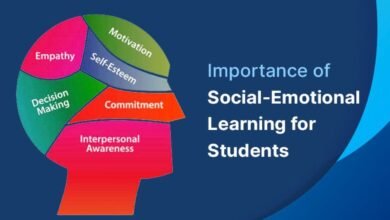The Future of Higher Education: What to Expect

Higher education has always been a cornerstone of societal development, driving innovation, cultural evolution, and economic growth. However, like many sectors, it is now at a crossroads. With rapid technological advancements, changing demographics, evolving job markets, and increasing demands for inclusivity and affordability, the landscape of higher education is undergoing significant transformations. As we look toward the future, it is crucial to understand these changes and their implications. This article explores what we can expect for the future of higher education, focusing on technology integration, the shifting role of educators, the rise of alternative credentialing, and the need for inclusivity and accessibility.
Technological Integration in Higher Education
One of the most significant drivers of change in higher education is technology. The digital revolution has already begun to reshape how education is delivered and consumed. The COVID-19 pandemic accelerated this shift, making online learning a necessity rather than a choice. As we move forward, we can expect a hybrid model to become the norm, combining in-person and digital learning experiences.
Artificial Intelligence (AI) and Machine Learning (ML) are set to revolutionize higher education by personalizing learning experiences. AI can analyze student data to identify learning patterns and predict academic performance, allowing educators to tailor instruction to individual needs. For instance, AI-driven platforms can provide students with personalized feedback and additional resources based on their progress and comprehension levels. This approach not only enhances learning outcomes but also helps in identifying students who may need extra support, thereby improving retention rates.
Virtual Reality (VR) and Augmented Reality (AR) are also poised to play a more significant role in the classroom. These technologies can create immersive learning environments that offer students hands-on experience in a virtual setting. Imagine medical students performing virtual surgeries or history students exploring ancient civilizations through VR. These technologies make learning more engaging and effective by providing real-world experience without leaving the classroom.
Moreover, the rise of Massive Open Online Courses (MOOCs) and other online platforms has democratized access to education. Students from all over the world can now access courses from prestigious institutions without the need to relocate. This trend is likely to continue, with more universities offering accredited online degrees and certifications. The challenge, however, will be ensuring the quality of these online programs and maintaining academic integrity.
The Evolving Role of Educators
As technology becomes more integrated into the classroom, the role of educators is also evolving. Rather than being the sole source of knowledge, educators are now facilitators of learning. This shift requires a different set of skills, including proficiency in digital tools and a greater emphasis on mentorship and guidance. Educators will need to be adaptable, continuously updating their skills to keep up with technological advancements and the changing needs of students.
Professional development will become increasingly important as educators are expected to not only teach but also design and manage digital learning experiences. This might involve creating engaging online content, moderating virtual discussions, and providing personalized feedback through digital platforms. The future educator must be tech-savvy, empathetic, and skilled in creating an inclusive classroom environment, whether physical or virtual.
Furthermore, as AI takes over routine tasks such as grading and administrative work, educators will have more time to focus on fostering critical thinking, creativity, and problem-solving skills in their students. These are competencies that machines cannot replicate, and they will be crucial in preparing students for the future workforce.
The Rise of Alternative Credentialing
The traditional model of earning a degree from a four-year college or university is increasingly being challenged by the rise of alternative credentialing. Micro-credentials, digital badges, and certificate programs are gaining popularity as they offer more flexible, affordable, and targeted learning opportunities. These alternatives allow individuals to acquire specific skills and knowledge in a shorter time frame, making them particularly appealing to working professionals looking to upskill or pivot in their careers.
In the future, we can expect to see a more modular approach to education, where students can mix and match courses and certifications from different institutions to create a personalized education pathway. This shift could lead to a more skills-based economy, where employers place greater value on specific competencies and practical experience rather than traditional degrees.
Moreover, alternative credentialing can help bridge the gap between education and employment. As the job market becomes more dynamic, there is a growing need for workers to continuously update their skills to remain competitive. Short, focused programs that offer practical, job-ready skills can help individuals stay relevant in their fields and adapt to new career opportunities.
However, this trend also raises questions about the value and recognition of these credentials. While some employers are beginning to embrace alternative qualifications, there is still a lack of standardization and understanding regarding their worth. Ensuring the quality and consistency of these programs will be crucial in gaining broader acceptance.
Inclusivity and Accessibility in Higher Education
Another significant trend shaping the future of higher education is the increasing focus on inclusivity and accessibility. As institutions strive to serve a more diverse student body, they must address barriers that have traditionally excluded certain groups. This includes not only financial barriers but also those related to race, gender, disability, and geography.
To foster inclusivity, higher education institutions must rethink their admissions processes, support services, and curriculum design. This could involve implementing holistic admissions criteria that go beyond standardized test scores to consider a student’s unique experiences and potential. It also means providing robust support systems for students from marginalized backgrounds, including mentorship programs, financial aid, and mental health services.
Accessibility is equally important in ensuring that all students have the opportunity to succeed. This includes making physical campuses accessible to those with disabilities and ensuring that online learning platforms are designed with accessibility in mind. Closed captioning, screen reader compatibility, and other assistive technologies are essential for creating an inclusive online learning environment.
Moreover, the push for inclusivity extends to the curriculum itself. There is a growing recognition of the need to decolonize the curriculum by including diverse perspectives and voices that have historically been marginalized. This not only enriches the educational experience for all students but also better prepares them to operate in a globalized world.
Financial Sustainability and Affordability
The rising cost of higher education has been a significant concern for years, leading to increased student debt and financial strain on families. As we look to the future, financial sustainability and affordability will be critical issues for higher education institutions to address. There is a growing call for more transparency in how tuition dollars are spent and a push towards finding innovative ways to reduce costs without compromising the quality of education.
Some institutions are experimenting with new financial models, such as income-share agreements (ISAs), where students pay a percentage of their future income rather than upfront tuition fees. While still controversial and not without risks, these models represent a potential shift in how education is funded, aligning the cost of education more closely with students’ financial outcomes.
Additionally, the rise of online education has the potential to reduce costs by eliminating the need for physical infrastructure and allowing for larger class sizes. However, it is essential to balance cost-saving measures with the need to provide high-quality education and support services for students.
The Globalization of Higher Education
Higher education is becoming increasingly global, with more students studying abroad and institutions establishing campuses in other countries. This trend is driven by a desire for diverse educational experiences and the need to operate in a globalized economy. As a result, we can expect to see more cross-border collaborations, joint degree programs, and international research initiatives.
However, the globalization of higher education also presents challenges, including cultural differences, varying educational standards, and political tensions. Institutions must navigate these complexities carefully to foster meaningful international partnerships and provide valuable experiences for students.
The future may also see an increase in competition among institutions on a global scale, with universities vying for the best talent from around the world. This could drive innovation and improvement in educational offerings but also exacerbate existing inequalities, as wealthier institutions may have more resources to attract top students and faculty.
Preparing for the Future Workforce
Finally, the future of higher education will be closely tied to the needs of the future workforce. As automation, AI, and other technological advancements reshape industries, there is a growing need for workers with skills in areas such as data analysis, digital literacy, and advanced problem-solving. Higher education institutions must adapt their curricula to meet these demands, ensuring that graduates are prepared for the jobs of tomorrow.
This may involve greater collaboration with industry partners to develop relevant programs and provide students with practical experience through internships, co-ops, and project-based learning. It also means fostering a culture of lifelong learning, where individuals are encouraged to continuously update their skills and knowledge throughout their careers.
Conclusion
The future of higher education is poised to be dynamic and transformative, driven by technological advancements, changing societal needs, and evolving economic landscapes. Institutions that can adapt to these changes by embracing technology, rethinking traditional roles, and fostering inclusivity and accessibility will be best positioned to thrive. As we move forward, it is essential to keep the focus on delivering high-quality education that prepares students for an increasingly complex and interconnected world. The road ahead may be challenging, but it also offers exciting opportunities to reshape higher education for the better.



